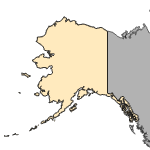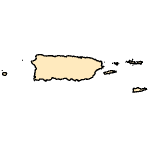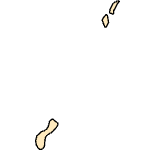Micropterus cataractae
(Shoal Bass)
Fishes
Native Transplant |
|
Common name: Shoal Bass
Taxonomy: available through
www.itis.gov
Identification: Williams and Burgess (1999); Page and Burr (1991); Mettee et al. (1996).
Size: 39 cm.
Native Range: Apalachicola River drainage of Alabama, Florida, and Georgia (Williams and Burgess 1999).



|

Alaska |

Hawaii |

Puerto Rico &
Virgin Islands |

Guam Saipan |
Hydrologic Unit Codes (HUCs) Explained
Interactive maps: Point Distribution Maps
Nonindigenous Occurrences:
Table 1. States with nonindigenous occurrences, the earliest and latest observations in each state, and the tally and names of HUCs with observations†. Names and dates are hyperlinked to their relevant specimen records. The list of references for all nonindigenous occurrences of Micropterus cataractae are found here.
Table last updated 12/19/2025
† Populations may not be currently present.
Means of Introduction: Intentional authorized stocking for sportfishing.
Status: Established from about 35 miles above to 25 miles below the Fall Line.
Impact of Introduction: The impacts of this species are currently unknown, as no studies have been done to determine how it has affected ecosystems in the invaded range. The absence of data does not equate to lack of effects. It does, however, mean that research is required to evaluate effects before conclusions can be made.
References: (click for full references)
Williams, J.D. and G.H. Burgess. 1999. A new species of bass,
Micropterus cataractae (Teleostei: Centrarchidae), from the Apalachicola River basin in Alabama, Florida and Georgia. Bulletin of the Florida Museum of Natural History 42(2):80-114.
Other Resources:
FishBase Summary
Author:
Fuller, P.
Revision Date: 12/16/2010
Peer Review Date: 12/16/2010
Citation Information:
Fuller, P., 2025, Micropterus cataractae Williams and Burgess, 1999: U.S. Geological Survey, Nonindigenous Aquatic Species Database, Gainesville, FL, https://nas.er.usgs.gov/queries/FactSheet.aspx?speciesID=394, Revision Date: 12/16/2010, Peer Review Date: 12/16/2010, Access Date: 12/19/2025
This information is preliminary or provisional and is subject to revision. It is being provided to meet the need for timely best science. The information has not received final approval by the U.S. Geological Survey (USGS) and is provided on the condition that neither the USGS nor the U.S. Government shall be held liable for any damages resulting from the authorized or unauthorized use of the information.